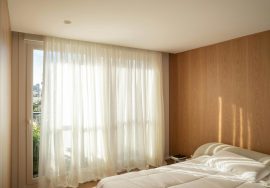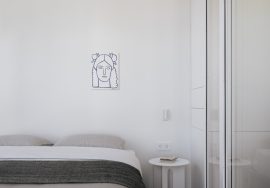
Effortless Elegance: How to Create Stunning Flower Arrangements at Home
Fresh flowers possess a quiet kind of magic. With just a few stems and a bit of imagination, you can transform a space, uplift a mood, and add a layer of personality to any corner of your home. While high-end florists make the art of flower arranging look complicated (and expensive), the truth is that creating beautiful floral displays doesn’t require professional training or a big budget. In fact, with a bit of creativity, the right approach, and an appreciation for natural beauty, anyone can master the art of home flower arrangements.
Forget the notion that floristry is only for weddings and luxury events. Adding floral touches to your daily environment is not just about decoration—it’s a mindful, accessible way to bring the outdoors inside and create something beautiful from nature’s simplest offerings.
Why Flowers Belong in Every Home
Flowers are more than pretty accents; they’re an instant mood-lifter. Studies have shown that exposure to flowers can reduce stress, improve memory, and even promote emotional well-being. Their colors, scents, and organic forms awaken the senses in a way few other decorations can.
Plus, adding flowers to your home is one of the simplest and most affordable ways to update your space seasonally, celebrate special occasions, or simply bring a moment of beauty into an ordinary day.
The best part? You don’t need a greenhouse or florist-level skills. With just a few easy techniques and an understanding of how to work with flowers intuitively, anyone can create arrangements that look effortlessly elegant.
Getting Started: Flower Arranging Basics
- Start With What You Have
You don’t need exotic blooms or a full bouquet to make an impact. Some of the most charming arrangements come from foraging in your garden, snipping herbs from your kitchen window, or using grocery store finds creatively. Even wildflowers or branches trimmed from a nearby bush can be transformed into a striking centerpiece.
Look around: Are there leftover roses from a gift? Eucalyptus from your last holiday garland? Mix them. Combine textures and shapes and don’t worry about following strict “rules”—the most delightful arrangements often arise from improvisation.
- Choose the Right Vessel
The container can be just as important as the flowers themselves. Vases, jars, pitchers, teacups, and even empty wine bottles can all be used to display arrangements. A mason jar lends a casual country feel, while a vintage milk glass vase brings elegance. The shape and size of the container should complement your flowers, not compete with them.
If you’re unsure where to start, opt for a classic clear vase—it lets the focus remain on the blooms and gives you flexibility as you experiment with different styles.
- Think in Layers and Shapes
One of the most useful tricks in flower arranging is to think in terms of structure:
Base greens like eucalyptus or ferns provide a foundation.
Focal flowers, such as roses, peonies, or lilies, create impact.
Filler blooms, like baby’s breath, waxflower, or alstroemeria, soften the gaps and add volume.
Start by placing greenery in your container to create a framework, then insert your focal flowers in odd numbers (like 3 or 5) for visual balance. Fill in with smaller blooms or textural elements to add depth.
Simple Flower Arrangement Ideas Anyone Can Try
You don’t need floral foam or wire cutters to make something beautiful. These simple arrangement concepts can be done with common blooms and items you likely already have at home.
- The Single-Flower Statement
Choose one type of flower—like sunflowers, tulips, or hydrangeas—and bunch them tightly in a vase. This technique is great for beginners and works wonderfully with bold blooms. Monochromatic arrangements bring harmony and are perfect for minimalist decor. - The Mason Jar Mix
Combine a handful of grocery store flowers with some backyard greens in a mason jar. Pair roses with lavender sprigs and some ivy or mint. It feels fresh, fragrant, and laid-back—perfect for a kitchen windowsill or bedside table. - The Asymmetrical Wild Bunch
Let your flowers do what they want. Choose a variety of shapes and colors—think Queen Anne’s lace, daisies, snapdragons—and arrange them loosely in a pitcher. Let some stems hang over the edge, and don’t stress about symmetry. This style mimics the beauty of wildflowers growing naturally. - Floating Blooms
For a dinner party or serene bathroom accent, float flower heads (like gardenias, gerbera daisies, or camellias) in a shallow bowl of water. Add floating candles for an ethereal touch. This is a low-maintenance, low-stem solution that still feels luxurious.
Tips and Tricks for Long-Lasting Arrangements
Once you’ve arranged your flowers, you’ll want them to last as long as possible. Follow these tips to extend their beauty:
Trim stems at an angle with clean scissors or a sharp knife. This helps the flowers absorb water more easily.
Remove any leaves that sit below the waterline—this prevents bacterial growth.
Change the water every 2 days, and trim the stems slightly each time.
Avoid placing arrangements near heat sources, direct sunlight, or fruit (which emits ethylene gas that speeds up wilting).
You can also add a few drops of bleach or sugar to the water to discourage bacteria and feed the blooms.
Add Personality Through Seasonal and Personal Touches
Part of the joy in home flower arranging is the ability to reflect your personality and the changing seasons. In spring, reach for tulips, daffodils, or hyacinths in pastel hues. In summer, go bold with sunflowers, dahlias, and zinnias. Autumn calls for warm-toned mums, marigolds, and branches with colorful foliage. Winter is perfect for white roses, evergreen sprigs, and deep red berries.
Don’t be afraid to get creative: add feathers, dried grasses, fruit slices, cinnamon sticks, or decorative ribbon. Use colored water or wrap the vase in burlap or twine. Let your arrangement tell a story—whether it’s cozy, romantic, whimsical, or dramatic.
When in Doubt, Go Green
If you’re unsure where to start, greenery-only arrangements are timeless and elegant. Eucalyptus, monstera leaves, ferns, or olive branches make a striking statement with little effort. They last longer than blooms, are less expensive, and offer a clean, modern look.
You can even pair greenery with candles or fairy lights for evening ambiance. Greenery is versatile, neutral, and looks good in virtually any space.
A Blooming Habit Worth Cultivating
The beauty of flower arranging is that it’s not about perfection—it’s about expression. With each arrangement, you hone your eye for color, shape, and balance. You learn to appreciate the fleeting nature of fresh blooms and the joy they bring to daily life.
Whether you’re styling a centerpiece for guests or just adding a cheerful bunch to your desk, arranging flowers is an act of self-care, creativity, and connection to nature. It’s an invitation to pause, play, and appreciate the simple things.










